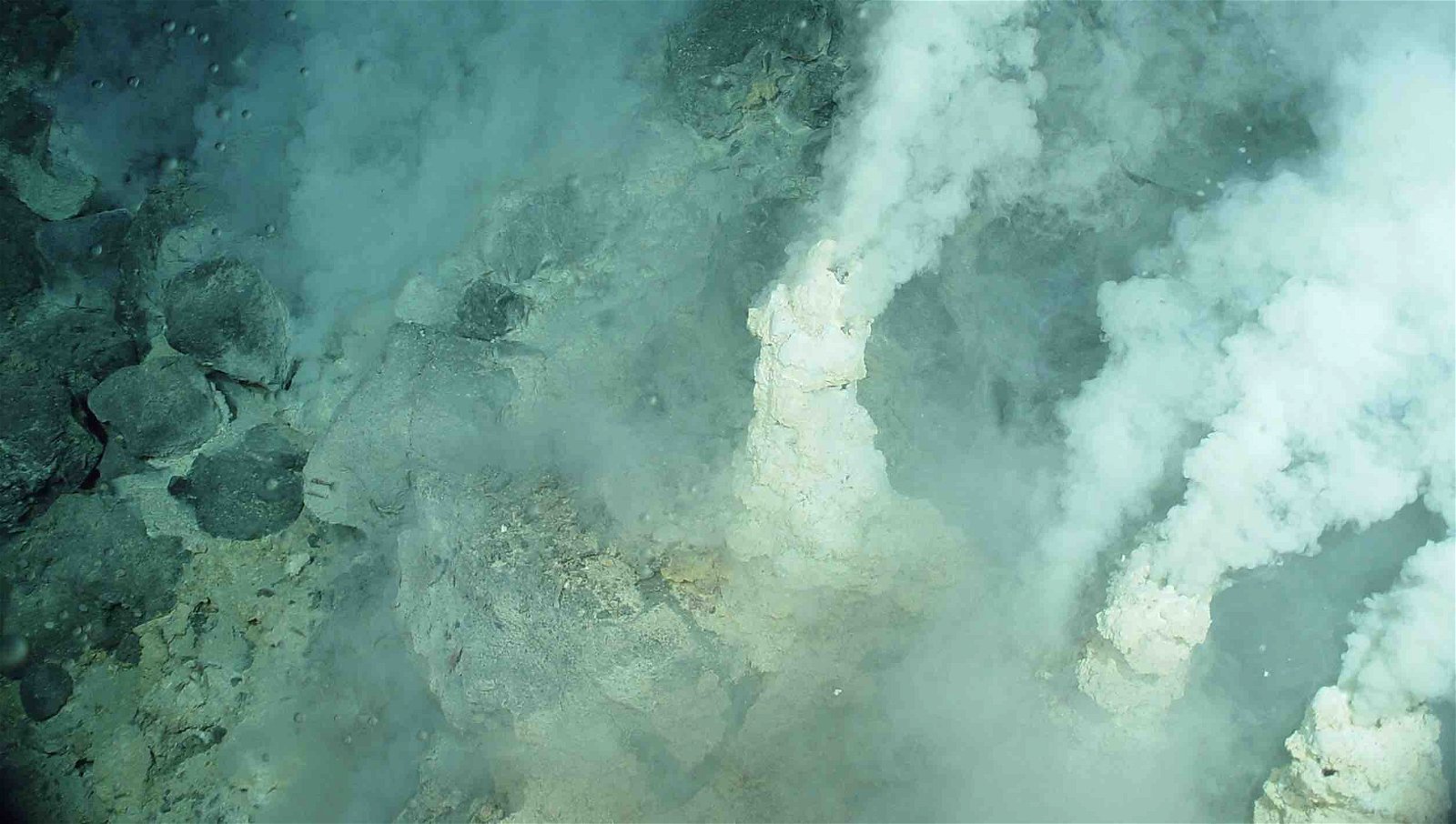Molecules believed to be essential to the emergence of life on Earth may have arisen from inorganic chemicals, according to new research that offers potentially crucial insights into how living organisms came to exist on our planet billions of years ago.
The recent study, conducted by Newcastle University scientists with support from the United Kingdom’s Natural Environmental Research Council, focused on not only the origins of life on Earth but also how geological materials helped give rise to some of the planet’s earliest organisms.
In a series of experiments, the researchers utilized hydrogen, bicarbonate, and magnetite rich in iron under conditions very similar to those that occur naturally near openings on the ocean floor from which very hot, mineral-rich water emerges.
Known as hydrothermal vents, these hot areas on the seafloor are environments well-recognized as the home of extremophiles, microorganisms that defy the expectations of scientists for their ability to thrive under very harsh conditions, including heat, as well as extreme acidity.
The Newcastle team’s recent study yielded a variety of different organic molecules that include as many as 18 carbon atoms, as well as carboxylic acids.
These acids—more commonly known as fatty acids—are organic molecules with components that are both hydrophobic and hydrophilic. In short, their constituent organic regions can both attract and repel water, giving rise to the natural formation of cell-like compartments in aqueous environments that the researchers suspect may have played a key role in the formation of cell membranes.
Although the importance of fatty acids in cellular composition was already well known, one problem that past studies had failed to reveal had been where they came from, and how they could have given rise to some of the planet’s earliest cellular organisms.
Dr. Graham Purvis, a Postdoctoral Research Associate at Durham University who led the research conducted at Newcastle for this study, says that understanding the processes that gave rise to the formation of cellular compartments is central to understanding life’s inception on our planet.
“These compartments were instrumental in fostering life-sustaining reactions by concentrating chemicals and facilitating energy production,” Purvis said in a statement, “potentially serving as the cornerstone of life’s earliest moments.”
However, one of the primary questions about such processes that must have occurred on the primordial Earth is where they would have taken place.
A main contender for possible locations where such processes might have first occurred is hydrothermal vents. Such environments could help to facilitate the mixing of hot water with fluids rich in hydrogen and other minerals.
As this extremely hot water emerges from these vents on the ocean floor, it mixes with seawater, which contains carbon dioxide.
During their experiments, the Newcastle research team was able to replicate the conditions that were present within the chemical environment along these primordial vents in Earth’s ancient oceans. The studies revealed that hydrogen-rich fluids, when mixed with not only water containing carbon dioxide but also iron-rich minerals, led to the formation of molecules through natural processes that would have been of key significance in the creation of early cell membranes.
The team’s findings reveal that simple cellular membranes could have formed under such conditions, occurrences that likely precipitated the formation of early life. It also may have allowed for many different types of cellular membranes to form. However, of potentially great significance is that this process also seems to be a good source for the production of acids crucial to the formation of life that have been discovered in other places, namely within meteorites.
Dr. Jon Telling, the study’s Principal Investigator and a Reader in Biogeochemistry at Newcastle’s School of Natural Environmental Sciences, says the new research points to the likely means by which Earth’s earliest life forms came to exist, and the team is currently focusing on learning what would have happened next, which Telling says likely involved these organic molecules detaching from mineral surfaces and forming “spherical membrane-bounded cell-like compartments; the first potential ‘protocells’ that went on to form the first cellular life.”
Another compelling finding the team’s research has yielded is the implication that the processes that give rise to the formation of membranes may not only have occurred in ancient times but may also be happening right now in oceans located beneath the icy exteriors of moons throughout our solar system.
The team’s new paper, “Generation of long-chain fatty acids by hydrogen-driven bicarbonate reduction in ancient alkaline hydrothermal vents,” by Graham Purvis et al., was published in the journal Communications Earth & Environment on January 10, 2024.
Micah Hanks is the Editor-in-Chief and Co-Founder of The Debrief. He can be reached by email at micah@thedebrief.org. Follow his work at micahhanks.com and on X: @MicahHanks.

